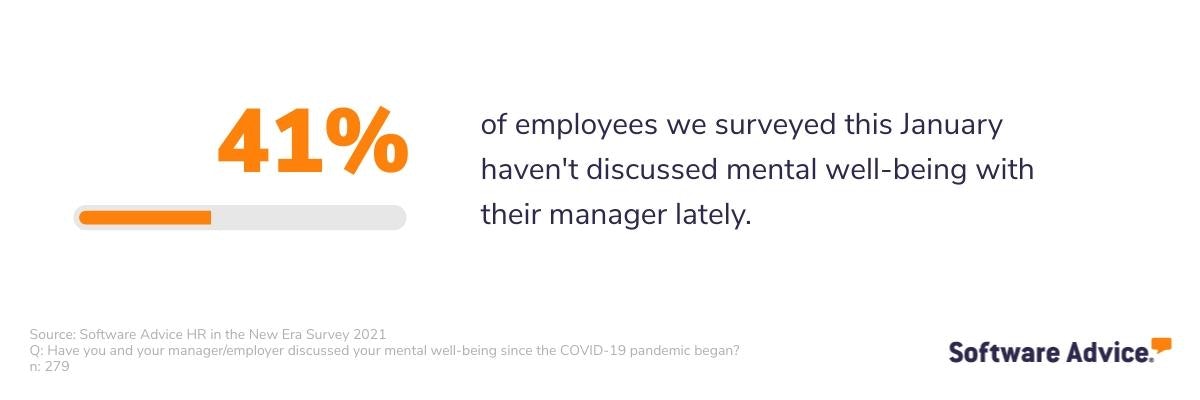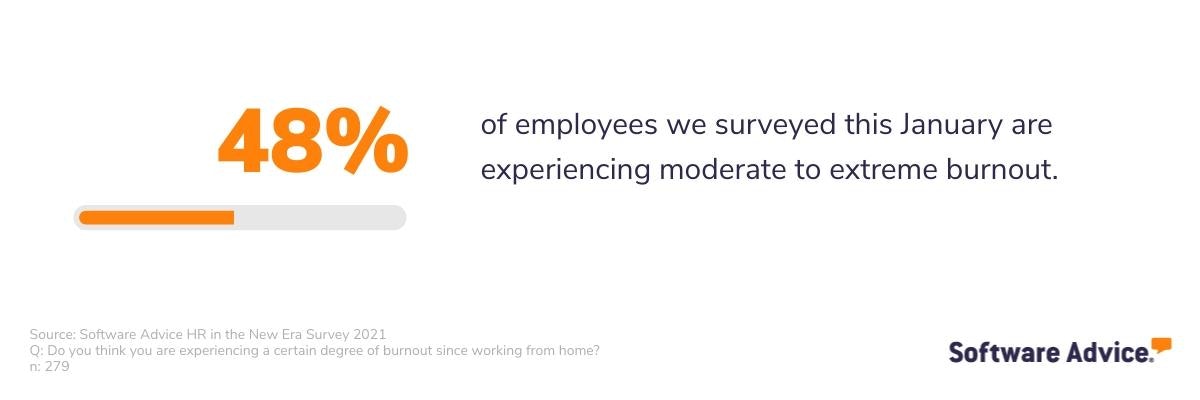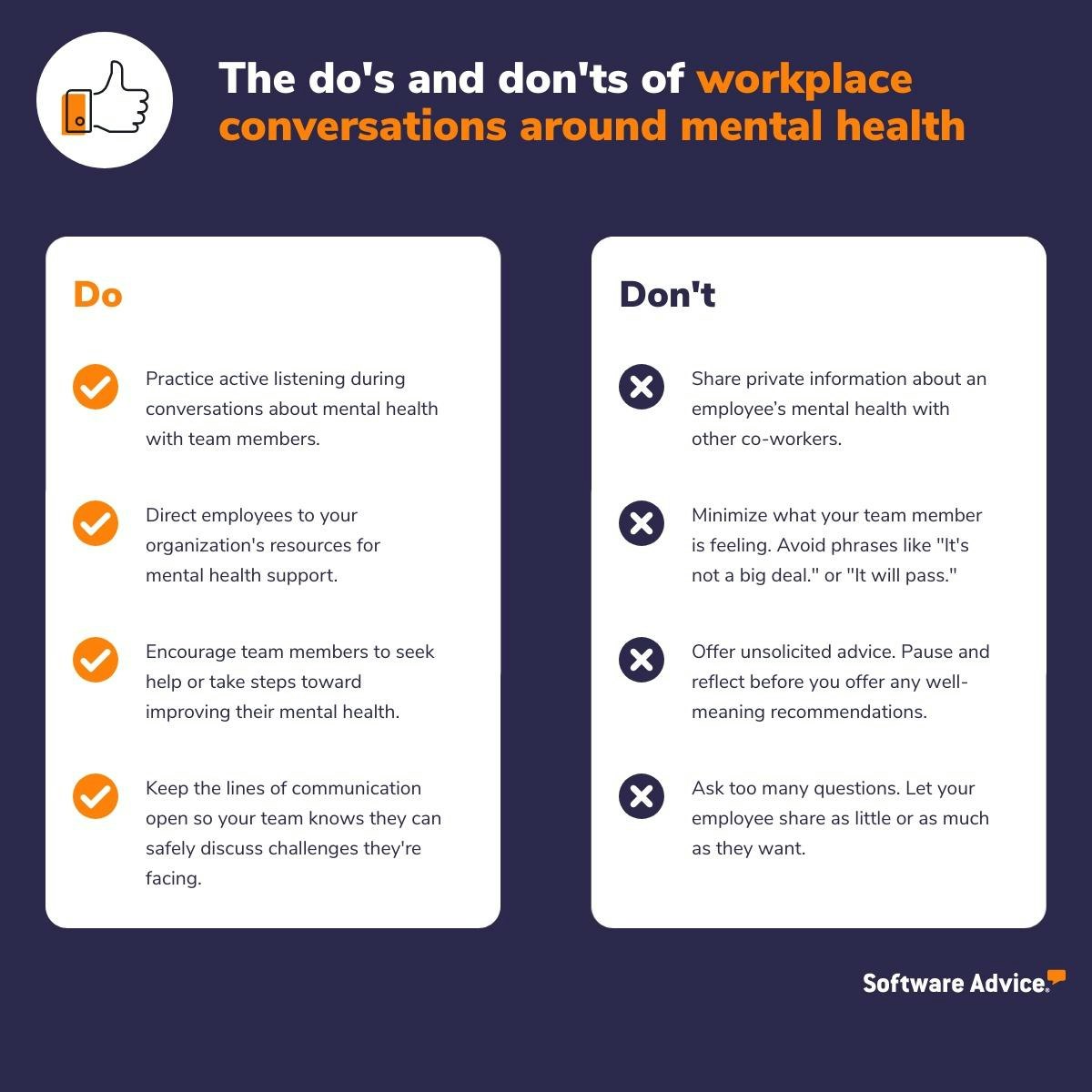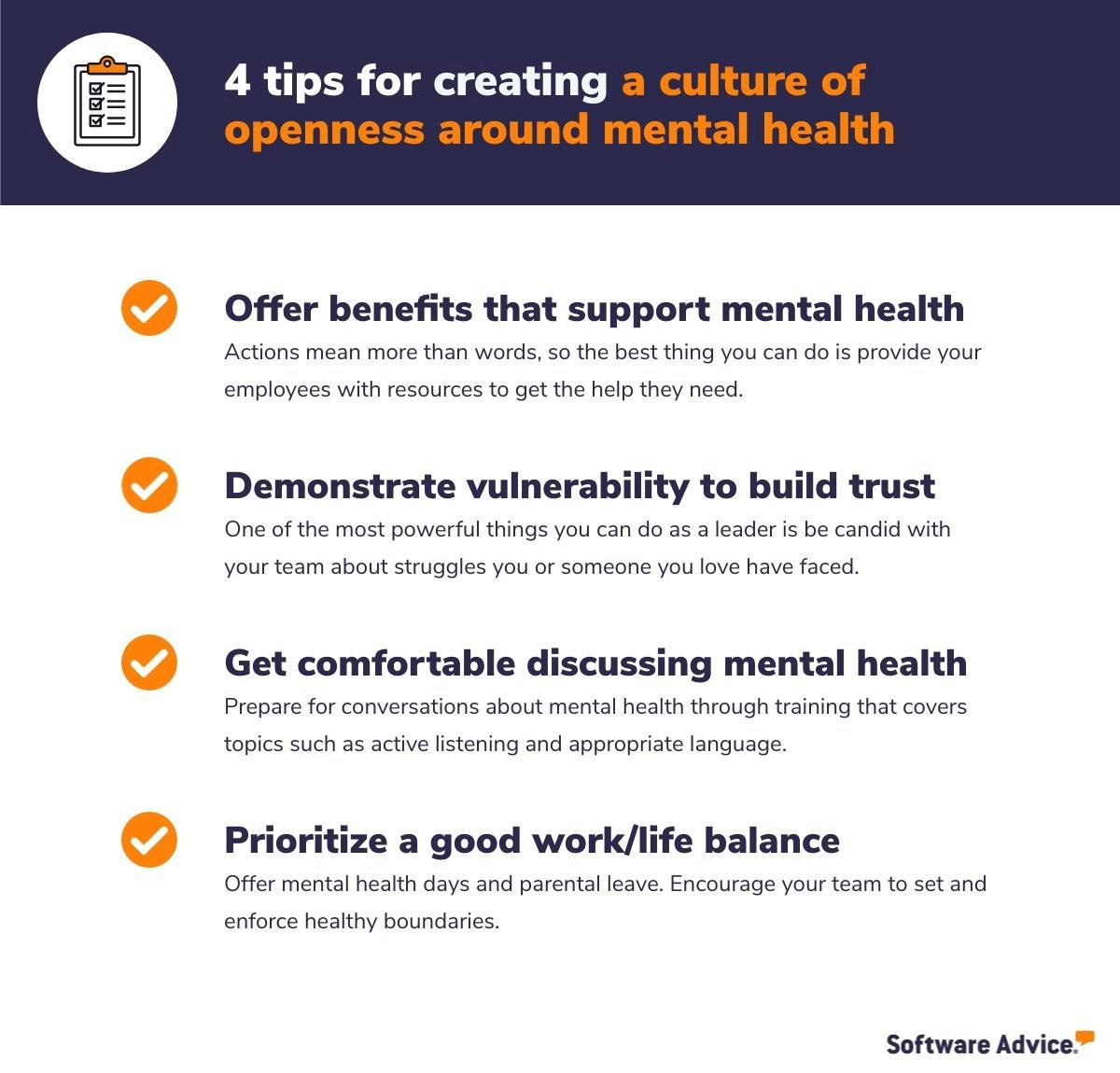How To Support Mental Health in the Workplace
According to the National Institute of Mental Health, nearly one in five adults in the United States lives with a diagnosable mental illness. That means there’s a high probability that you know someone who struggles with their mental health—or maybe you are that person.
Providing employees with mental health support is the right thing to do, but it’s also good for business. According to the World Health Organization, depression and anxiety disorders alone cost the global economy $1 trillion a year in lost productivity.
Rolling out a mental health support strategy will help you avoid lost productivity, improve engagement, and— most importantly—provide more holistic well-being support to your employees.

Despite the benefits, it’s clear that many companies have a long way to go when it comes to providing mental health support. We made this guide to help HR professionals who want to get buy-in from their company’s leadership team to strengthen their mental health support strategy—and we’ll show you how to do it, too. Learn more about our survey methodology.
5 mental health support benefits to add to your strategy
Offering mental health support benefits should be at the center of your mental health support strategy. These benefits don’t need to be expensive, but they should appeal to employees with varying needs.
Here are five employee mental health benefits commonly offered by organizations.
1. Behavioral health insurance
Let’s get something out of the way: Mental illnesses can’t be treated with morale boosting events and meditation apps. While those things provide value, they are not replacements for professional care. For that reason, offering health insurance that covers treatment for mental health conditions is the best thing you can do for your employees.
Robin MacFarlane Ph.D., a clinical psychologist with 20 years of experience, cautions against any mental health strategy that leaves out good insurance benefits. She says:
“A company that offers a ‘band-aid’ mental health solution, like a free meditation app and an opportunity to chat with a wellness expert, is offering something that will backfire.”
Robin MacFarlane Ph.D.
We’re with Robin. Your top priority should be offering health insurance that covers mental health services. Fortunately, most of the largest health insurance providers (such as Cigna, UnitedHealthcare, and Humana) offer coverage for behavioral health services, so it’s just a matter of choosing a provider and plan with your employees’ mental well-being in mind.
2. Employee assistance programs (EAPs)
EAPs are intervention programs that help your employees resolve problems they may be facing in different areas of their personal lives. These programs are voluntary and can be used by employees to help overcome challenges like substance abuse or addiction, grief/loss, traumatic events, and financial or legal troubles. Usually, EAPs are run by a third-party service with expertise and resources that equip them to guide individuals through these difficult situations.
If you’d like to make an EAP a part of your mental health benefits, start by talking to your current health insurance provider. Most health insurance providers have EAP options available, but if yours doesn’t you can always reach out to other vendors to discuss their offerings. The cost of EAPs depends on the scope of the program and the size of your business.
For organizations with well-being programs, EAPs are one of the most commonly offered benefits. Despite that, they are frequently underutilized. According to SHRM, EAP utilization averages below 10%.
If you choose to offer an EAP, make sure information about how employees can use it is readily available. You should also elect someone on-site to be your EAP point person (likely your HR manager) so they can answer questions and direct employees to resources.
3. Resilience and stress management trainings
Resilience and stress management training is a category of courses that can teach employees how to cope in challenging situations, rather than succumb to stress. Typically taught by an experienced outsider, these training sessions help your employees recognize and manage emotions that fuel stress and burnout.
Offering resilience training alone is not enough, but it can be a good way to boost team morale and create a healthy work environment with strong cooperation and collaboration between co-workers. Coursera has many resilience-related courses available, and a handful are completely free to enroll in.
4. Guilt-free mental health days
Just like your employees are encouraged to stay home when they’re feeling physically ill, they should also be able to take a day or two off to recover from stress, work-related burnout, or more serious issues like chronic anxiety and depression. Especially lately, with a significant portion of the workforce feeling burnt out from working through the COVID-19 pandemic.

Accepting and encouraging the use of sick days or paid time off for mental health reasons is a good start. But gifting a day off in the name of mental health to your employees is even better.
Gifting your employees an extra day off to rest and recharge helps minimize presenteeism (the act of showing up to work sick, fatigued, or otherwise not operating at normal levels of productivity). It also communicates that your organization prioritizes its employees’ mental health.
You can gift a long lunch, half day, or a whole day off. We recommend offering this to everyone in your organization, but asking individuals to coordinate with their managers to let them know when they’ll be unavailable.
5. Flexible work
Flexible work gives employees the option of where and when they work. Offering flexibility to your employees can mean different things. It could look like offering the option to work remotely a few days each week, to work outside of traditional nine-to-five hours, or a mix of the two.
As a benefit, flexible work can support mental health by giving employees more control over their schedule. For example, working remotely frees up time by negating the hours it takes for your employees to commute to and from the office. It also allows your employees to work around their personal obligations, like appointments or caring for family members.
During the COVID-19 pandemic, many organizations embraced remote work successfully—and employees were grateful for it. According to a recent Software Advice survey, 86% of employees currently working from home want to continue to work remotely at least part of the time. A large majority of employees enjoy the flexibility remote work provides, so offering work flexibility is an easy way to support the needs of your team both in and outside of the office.
Prepare leaders at your organization for discussions about mental health
Whether it’s in an open forum or a one-on-one conversation, discussions about mental health in the workplace are tricky to navigate appropriately. For that reason, HR should help prepare people managers for conversations about personal topics. This preparation should empower—but not force—your team to discuss subjects they may be nervous to bring up.
We recommend implementing formal workplace mental health training at your organization. Training is beneficial because it provides a framework for discussions on mental health your employees can fall back on.
Fortunately, there are plenty of courses out there that can teach your team the importance of a mentally healthy workplace, how to manage with mental health in mind, and how to navigate conversations about mental health.
Here are a few examples of mental health training programs:
If you opt to not offer formal training, you should still provide resources for leaders that help them prepare for sensitive discussions. Here’s a conversation guide that covers the do’s and don’ts of discussions around mental health:

Create a culture of openness around mental health
Ultimately, the goal of every step mentioned above is to create a workplace culture that is open, accepting, and supportive when it comes to mental health. Culturally, awareness is growing, but the stigma placed on mental illness in the past can still be felt—especially within the workplace.
That’s why it’s so critical to strive for a work environment that is genuinely supportive of employees’ mental health.
Cultural shifts don’t happen overnight. They take planning, commitment, and time. If you’d like to start making a change at your organization, here are our top four tips for creating a culture of openness around mental health:

Take the first steps toward supporting your employees’ mental health
A 2020 study from Mind Share Partners, SAP, and Qualtrics found that half of millennials and 75% of Generation Z employees had left roles for mental health reasons. Don’t lose quality talent by failing to provide quality support.
Use this guide as a starting point for your mental health support strategy, but keep listening and adapting to meet the unique needs of your employees.
The tools in your tech stack can make all the difference when it comes to supporting your workforce. Here are some tech investments that will complement your mental health support strategy:
Employee pulse survey tools can be used to poll your workforce and understand how they’re feeling.
Benefits administration software is useful for staying organized while reassessing the benefits you offer.
Employee recognition software can help you acknowledge and reward your employees for their hard work and accomplishments.
Survey methodology
The Software Advice HR in the New Era Survey 2021 was conducted in January 2021. We surveyed workers at U.S. small businesses with two to 500 employees. The responses are a representative sample (by age and gender) of the U.S. population. We worded the questions to ensure that each respondent fully understood the meaning and the topic at hand.